
Quick lesson regarding probability and using cards to study.
- Subject:
- Statistics and Probability
- Material Type:
- Activity/Lab
- Author:
- Tracy Malone
- Date Added:
- 03/14/2023

Quick lesson regarding probability and using cards to study.
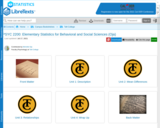
Welcome to behavioral statistics, a statistics textbook for social science majors!

Last week we introduced p-values as a way to set a predetermined cutoff when testing if something seems unusual enough to reject our null hypothesis - that they are the same. But today we’re going to discuss some problems with the logic of p-values, how they are commonly misinterpreted, how p-values don’t give us exactly what we want to know, and how that cutoff is arbitrary - and arguably not stringent enough in some scenarios.

Passion-Driven Statistics is an NSF-funded, multidisciplinary, project-based curriculum that supports students in conducting data-driven research, asking original questions, and communicating methods and results using the language of statistics. The curriculum supports students to work with existing data covering psychology, health, earth science, government, business, education, biology, ecology and more. From existing data, students are able to pose questions of personal interest and then use statistical software (e.g. SAS, R, Python, Stata, SPSS) to answer them. The e-book is presented in pdf format for ease of use across platforms.

This short activity provides an intuitive introduction to earthquake magnitude using an everyday item--spaghetti. Learners are introduced to the earthquake magnitude scale by breaking different amounts of uncooked noodles. Visual scale of the pasta emphasizes the relative differences between magnitudes with each whole step in magnitude. For older students, the demonstration helps students understand why seismologists use the nonlinear logarithmic scale to best graph the huge range of quantities.
(Note: this resource was added to OER Commons as part of a batch upload of over 2,200 records. If you notice an issue with the quality of the metadata, please let us know by using the 'report' button and we will flag it for consideration.)
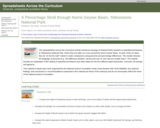
Spreadsheets Across the Curriculum module/Geology of National Parks course. Students calculate percentages and percent differences to compare various measures of fumaroles, mud pots, hot springs and geysers in this introduction to hydrothermal features at Yellowstone NP.
(Note: this resource was added to OER Commons as part of a batch upload of over 2,200 records. If you notice an issue with the quality of the metadata, please let us know by using the 'report' button and we will flag it for consideration.)
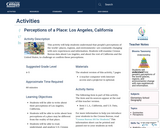
This activity will help students understand that people’s perceptions of the world—places, regions, and environments—are constantly changing with new experiences and information. Students will examine Census Bureau data about Los Angeles, and about the rest of California and the United States, to challenge or confirm these perceptions.
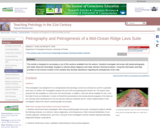
This is a laboratory-style investigation wherein students examine the petrography and major-element geochemistry of 6 samples of mid-ocean ridge basalt and related differentiated lavas recovered from the Cleft segment of southern Juan de Fuca Ridge, a medium spreading-rate MOR in the northeast Pacific Ocean. Lava types range from basalt to dacite.
After some initial background information on basalts, the MOR environment, and the study area students investigate four thin sections, beginning with typical basalts and ending with a dacite. They are led through a series of directed questions that help them gain familiarity with commonly occurring minerals and textures in mid-ocean ridge lavas. Questions direct students toward the interpretation of quench-related textural features and crystallization sequence, as well as a few other textural observations and petrographic techniques. After proceeding through the initial four thin sections and associated questions student are then asked to undertake "full thin-section descriptions" of the remaining two samples.Â
After investigating the thin-sections and determining a possible crystallization sequence from the petrographic data gathered (plagioclase followed by olivine followed by augitic clinopyroxene followed by pigeonite), students examine a P-T phase diagram to constrain possible pressures of formation. Discovering that crystallization pressures were low (less than ~ 0.75 GPa) students then examine a phase diagram of the olivine-plagioclase-augite-quartz system (olivine-quartz-augite ternary, projected from the plane of plagioclase saturation) [Walker, 1979]. Students draw 2 possible liquid lines of descent (LLD) onto the diagram, and then use their petrographic observations to qualitatively plot the samples along that LLD, determining a relative sequence of chemical evolution for the suite of samples. Lastly, given those determinations, student graph the major element data for the lava suite to infer paths of chemical evolution and the effects of fractional crystallization (possibly coupled with magma mixing).
(Note: this resource was added to OER Commons as part of a batch upload of over 2,200 records. If you notice an issue with the quality of the metadata, please let us know by using the 'report' button and we will flag it for consideration.)

Using string, bubble gum, and a model of a GPS station, demonstrate how GPS work to pinpoint a location on Earth.Precisely knowing a location on Earth is useful because our Earth's surface is constantly changing from earthquakes, volcanic eruptions, tectonic plate motion, landslides, and more. Thus, scientists can use positions determined with GPS to study all these Earth processes.
(Note: this resource was added to OER Commons as part of a batch upload of over 2,200 records. If you notice an issue with the quality of the metadata, please let us know by using the 'report' button and we will flag it for consideration.)
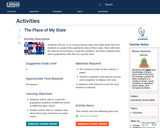
Students will use a U.S. Census Bureau data tool called State Facts for Students to analyze the population data of their state. They will write the data in several forms, round the numbers, and then compare their state’s population with that of a nearby state.
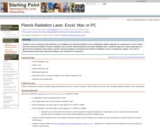
Students use an existing Excel workbook to investigate how spectral irradiance from a blackbody radiator depends on temperature, Excel Mac or PC
(Note: this resource was added to OER Commons as part of a batch upload of over 2,200 records. If you notice an issue with the quality of the metadata, please let us know by using the 'report' button and we will flag it for consideration.)
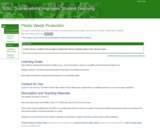
In this exercise, students will use data to predict the amount of plastic waste in the next ten years.
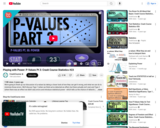
We're going to finish up our discussion of p-values by taking a closer look at how they can get it wrong, and what we can do to minimize those errors. We'll discuss Type 1 (when we think we've detected an effect, but there actually isn't one) and Type 2 (when there was an effect we didn't see) errors and introduce statistical power - which tells us the chance of detecting an effect if there is one.
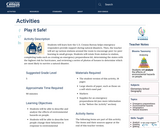
Students will learn how the U.S. Census Bureau helps emergency responders provide support during natural disasters. Then, the teacher will set up various stations around the room to encourage peer-to-peer learning in small groups. Students will rotate from station to station, completing tasks such as creating an emergency preparedness kit, determining the states with the highest risk for hurricanes, and reviewing a series of photos of houses to determine which are most likely to survive a natural disaster.
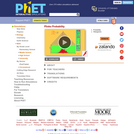
The students will play a classic game from a popular show. Through this they will see the probabilty that the ball will land each of the numbers with more accurate results coming from repeated testing.

Today we’re going to finish up our unit on data visualization by taking a closer look at how dot plots, box plots, and stem and leaf plots represent data. We’ll also talk about the rules we can use to identify outliers and apply our new data viz skills by taking a closer look at how Justin Timberlake’s song lyrics have changed since he went solo.

This course includes basic theory of Poisson Distribution and some solved examples.
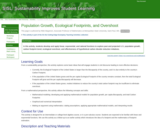
In this activity, students develop and apply linear, exponential, and rational functions to explore past and projected U.S. population growth, carbon footprint trend, ecological overshoot, and effectiveness of hypothetical carbon dioxide reduction initiatives.
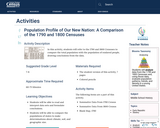
In this activity, students will refer to the 1790 and 1800 Censuses to compare the total population with the population of enslaved people, drawing conclusions from the data.
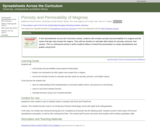
SSAC Physical Volcanology module. Students build a spreadsheet for an iterative calculation to find volume of bubbles and hence porosity, permeability and gas escape as a function of depth.
(Note: this resource was added to OER Commons as part of a batch upload of over 2,200 records. If you notice an issue with the quality of the metadata, please let us know by using the 'report' button and we will flag it for consideration.)